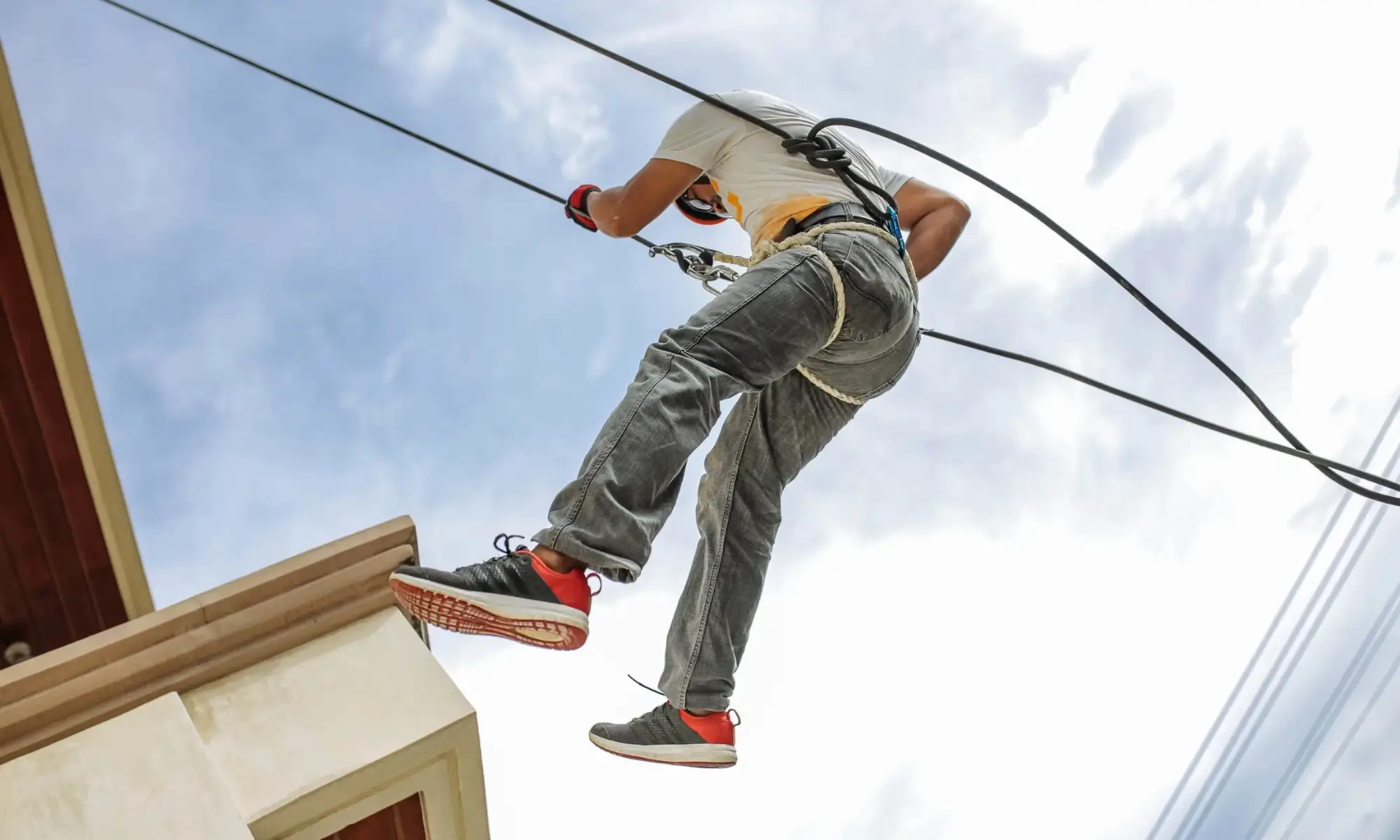Suspension trauma, also known as harness hang syndrome (HHS) or suspension syndrome, is a life-threatening condition that occurs when a person is left hanging motionless in a fall arrest harness for an extended period. While safety harnesses are essential for fall protection, they can introduce secondary risks if the worker is left suspended for too long without rescue.
This article explores what suspension trauma is, its causes, symptoms, potential risks, and the best prevention and rescue strategies to ensure worker safety in industries requiring fall protection systems.
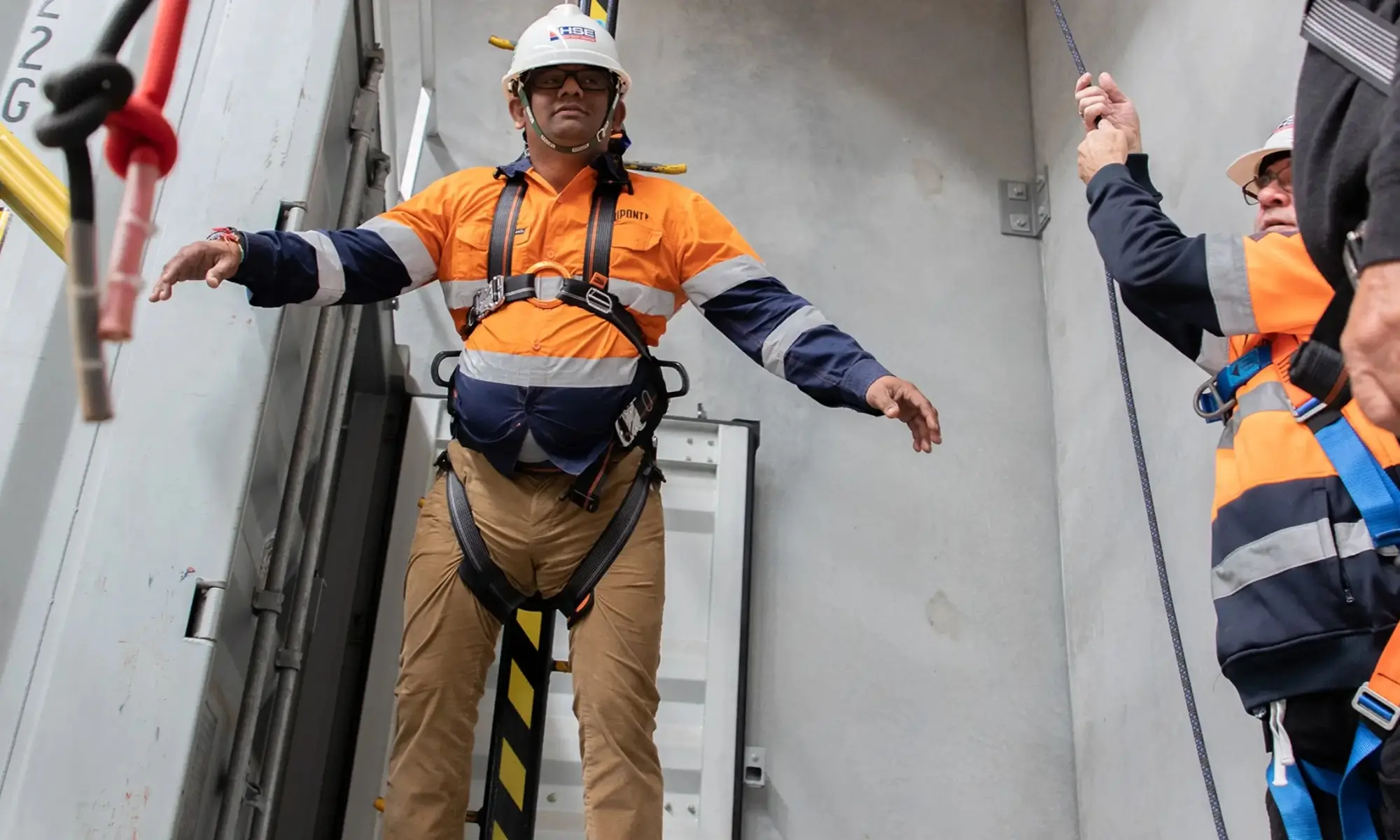
What is Suspension Trauma?
Suspension trauma is a form of orthostatic intolerance that occurs when the body’s circulatory system is disrupted due to prolonged upright suspension. Blood pools in the lower extremities, limiting blood flow to the brain and vital organs. If left untreated, this can cause dizziness, unconsciousness, and even death.
How Does Suspension Trauma Occur?
When a person falls and is caught by their fall arrest harness, the body remains in a vertical hanging position. While this prevents a fatal impact, it can restrict circulation in several ways:
- Venous pooling: The legs remain motionless, causing blood to collect in the lower extremities.
- Lack of muscle contraction: Normally, leg muscles help pump blood back to the heart, but in a suspended position, they become inactive.
- Harness compression: The harness straps put pressure on the legs, further restricting circulation.
- Lack of oxygenated blood: The reduced circulation leads to oxygen deprivation in the brain, which can result in loss of consciousness.
Suspension trauma can occur within 10 to 30 minutes of suspension, depending on various factors like the individual’s health, injuries, and environmental conditions.
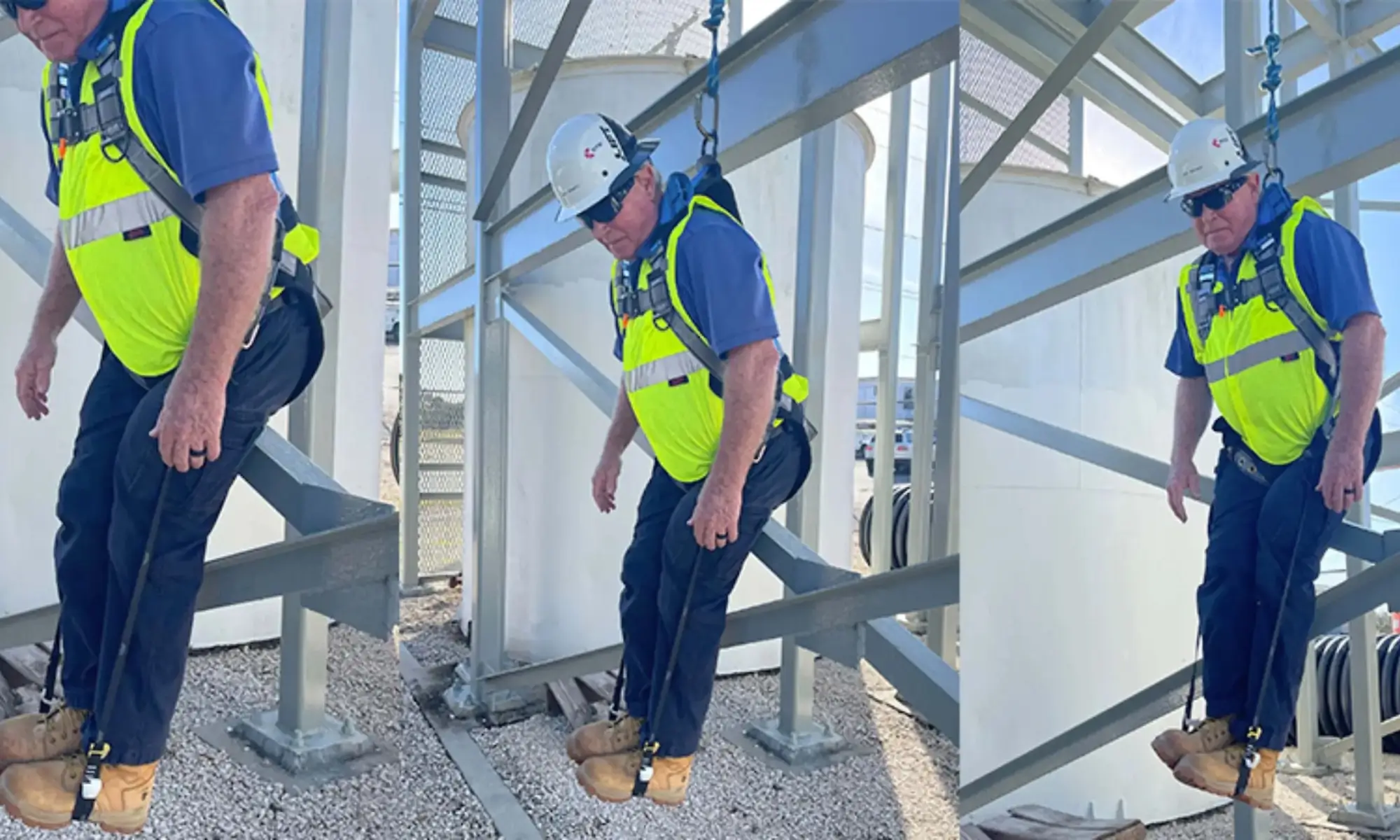
Symptoms of Suspension Trauma
Suspension trauma occurs when a person remains motionless in a vertical position while suspended in a safety harness. The lack of movement leads to restricted blood flow, causing circulatory shock that can rapidly worsen if not addressed. The symptoms can develop within 10 to 30 minutes, depending on the individual’s health, injuries, and environmental factors.
Early Symptoms (Warning Signs)
These symptoms indicate that the suspended worker is experiencing circulatory distress and may be at risk of losing consciousness:
- Dizziness and Lightheadedness – A result of reduced blood flow and oxygen supply to the brain.
- Nausea and Vomiting – The body’s response to circulatory imbalance.
- Sweating and Pale Skin (Pallor) – Caused by the body’s attempt to regulate blood pressure and oxygen supply.
- Rapid Heart Rate (Tachycardia) – The heart tries to compensate for reduced circulation.
- Shortness of Breath (Dyspnea) – Decreased oxygen delivery to vital organs can make breathing difficult.
- Blurred Vision or Tunnel Vision – A sign of reduced blood supply to the eyes and brain.
- Tingling or Numbness in the Legs – Caused by compression of blood vessels and nerves.
- Feelings of Anxiety and Restlessness – The body’s response to distress signals from the cardiovascular system.
Advanced Symptoms (Critical Stage)
If the worker remains suspended without rescue, symptoms will escalate into a life-threatening condition:
- Weak Pulse and Low Blood Pressure (Hypotension) – The cardiovascular system is failing to deliver blood effectively.
- Loss of Consciousness (Syncope) – Due to severe oxygen deprivation in the brain.
- Irregular Heart Rhythm (Arrhythmia) – Potential precursor to cardiac arrest.
- Respiratory Distress or Arrest – The worker may struggle to breathe or stop breathing entirely.
- Shock – A critical condition where the body fails to maintain adequate circulation to vital organs.
- Cardiac Arrest (Heart Attack) – Prolonged suspension without rescue can lead to death.
Post-Rescue Symptoms
Once rescued, the worker may still be at risk of complications, including:
- Reflow Syndrome (Blood Rush Shock) – Sudden return of pooled blood to the heart may cause cardiac arrest.
- Kidney Failure (Renal Shock) – The kidneys are highly sensitive to oxygen deprivation.
- Delayed Organ Damage – Some effects of suspension trauma can continue even after rescue, requiring medical supervision.
Key Takeaways
- Early symptoms include dizziness, nausea, sweating, and numbness.
- Advanced symptoms include unconsciousness, respiratory distress, and cardiac arrest.
- Immediate rescue and proper post-rescue care are critical to prevent fatal complications.
If suspension trauma is suspected, quick action must be taken to rescue the worker and provide emergency medical care to prevent life-threatening consequences.
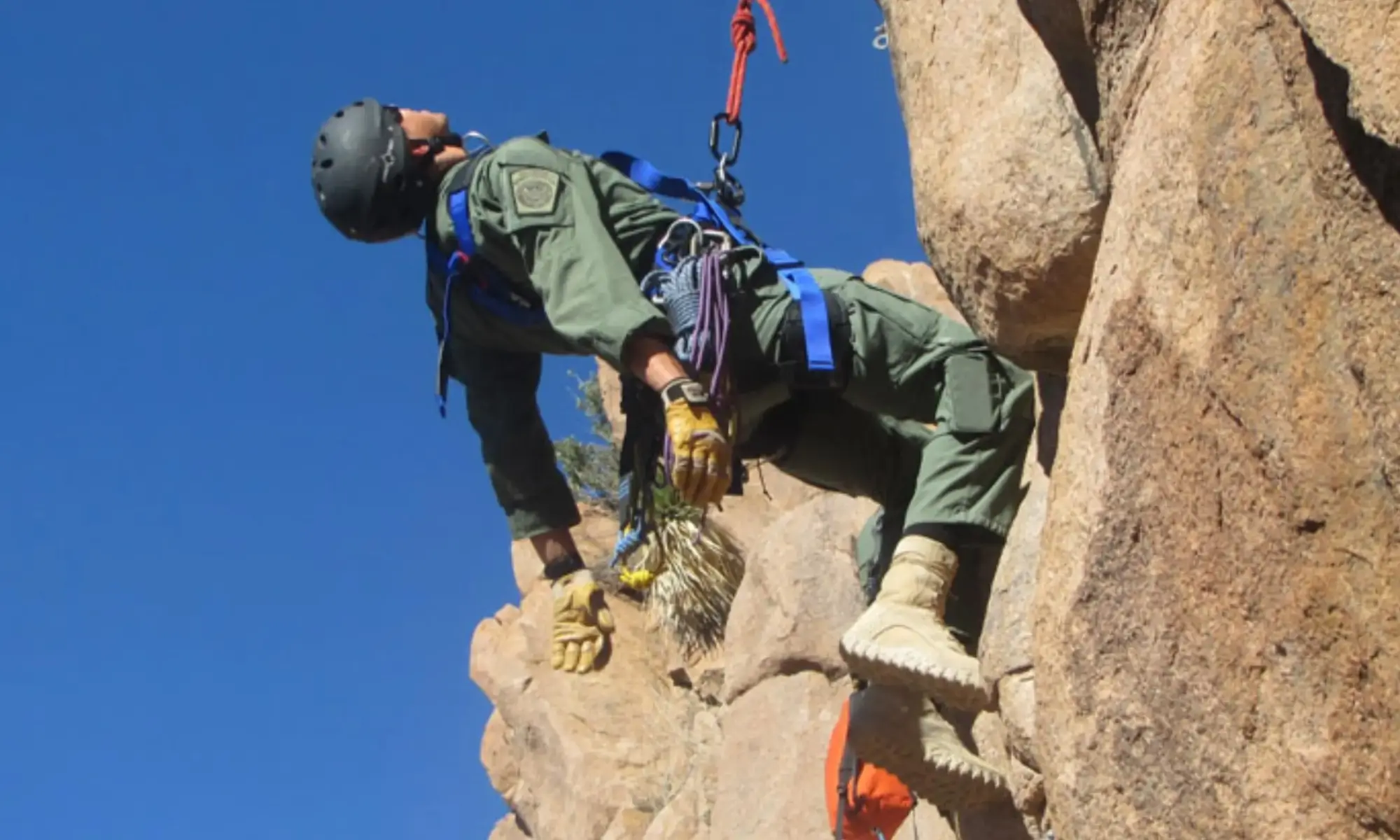
Industries at Risk
Workers in high-risk industries where fall arrest systems are used must be aware of suspension trauma risks. These include:
- Construction and roofing: Workers using safety harnesses for fall protection.
- Industrial maintenance: Those working at heights, such as on towers, bridges, and scaffolding.
- Oil and gas: Employees working on offshore platforms or drilling rigs.
- Rescue operations: Firefighters, emergency responders, and search-and-rescue teams.
- Climbing and mountaineering: Recreational climbers using harnesses for safety.
- Confined space work: Workers in silos, tanks, or tunnels where fall protection is necessary.
Anyone using a personal fall arrest system (PFAS) is at risk of suspension trauma if not rescued promptly.
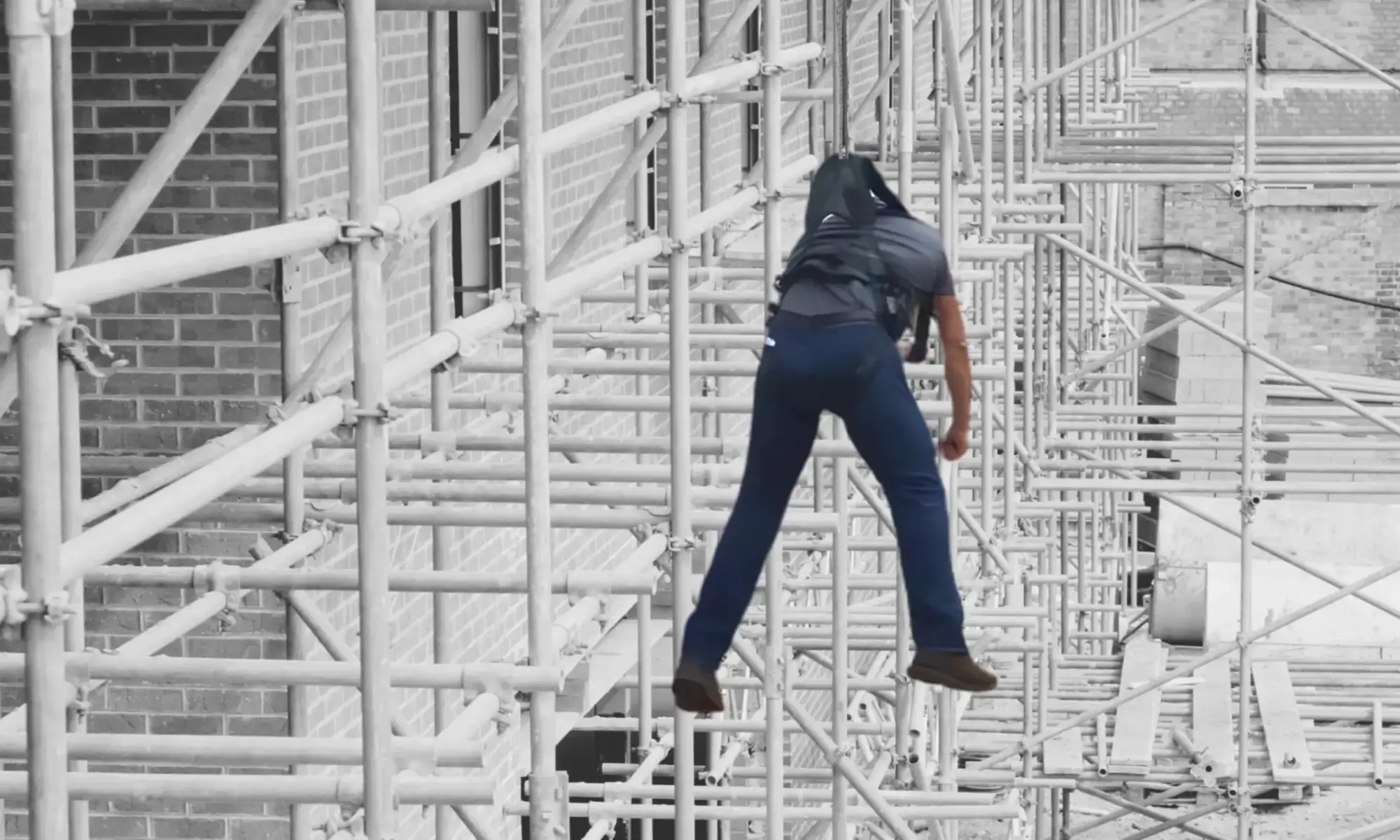
Prevention of Suspension Trauma
Preventing suspension trauma ensures worker safety when using fall arrest systems. Since the condition can develop rapidly after a fall, proactive planning, proper equipment use, and emergency preparedness are essential in minimizing the risks. Below are key prevention strategies to protect workers from suspension trauma.
1. Proper Harness Selection and Fit
- Use a well-fitted harness: A poorly adjusted harness can increase leg pressure, restricting blood circulation.
- Choose harnesses with suspension relief straps: These allow suspended workers to relieve pressure and stimulate circulation by standing on them.
- Ensure full-body harnesses distribute weight evenly to reduce blood vessel compression.
2. Pre-Use Inspection and Suspension Testing
- Inspect harnesses and lanyards before use to ensure there are no defects or damage.
- Perform a suspension test to confirm the harness is properly adjusted and comfortable for the user.
- Ensure leg straps are secure but not too tight, as excessive pressure can increase the risk of circulation issues.
3. Worker Training and Awareness
- Train workers on the risks of suspension trauma and how to recognize symptoms.
- Teach self-rescue techniques such as moving the legs and shifting weight while suspended.
- Provide emergency response training so workers know how to react in case of a fall.
- Conduct regular drills to ensure rescue teams are prepared for real-life emergencies.
4. Effective Rescue Planning and Execution
- Develop a written rescue plan that ensures quick retrieval of a fallen worker.
- Ensure a fast rescue response (within 5-15 minutes) to prevent loss of consciousness.
- Use mechanical rescue systems like pulleys, ladders, or aerial lifts to retrieve suspended workers quickly.
- Equip workers with self-rescue options, such as descent devices or controlled lowering systems.
5. Encourage Leg Movement While Suspended
If a worker falls and remains suspended before rescue, they should:
- Move their legs periodically to help blood circulation.
- Press against a foothold or trauma relief straps if available.
- Shift their weight in the harness to reduce pressure on leg straps.
6. Use Alternative Fall Protection Methods
- Fall Restraint Systems: Prevent falls from occurring in the first place by limiting worker movement.
- Work Positioning Systems: Keep workers stable without full suspension.
- Safety Nets and Guardrails: Provide additional protection in high-risk areas.
7. Post-Rescue Care and Monitoring
- Do NOT lay the rescued worker flat immediately—this can cause reflow syndrome, leading to cardiac arrest.
- Place them in a semi-reclined “W-position” (knees bent, sitting upright) to allow gradual blood redistribution.
- Monitor for delayed symptoms such as shock, kidney failure, or breathing difficulties.
- Ensure medical evaluation even if the worker appears unharmed.
Key Takeaways
✔ Proper harness fit and use can prevent circulation issues.
✔ Training and drills prepare workers for self-rescue and emergency response.
✔ Fast and effective rescue is critical—aim for retrieval within 5-15 minutes.
✔ Encouraging movement while suspended can delay the onset of symptoms.
✔ Post-rescue positioning must be done correctly to avoid further complications.
By following these preventative measures, workplaces can significantly reduce the risk of suspension trauma and ensure worker safety in high-risk environments where fall protection systems are required.
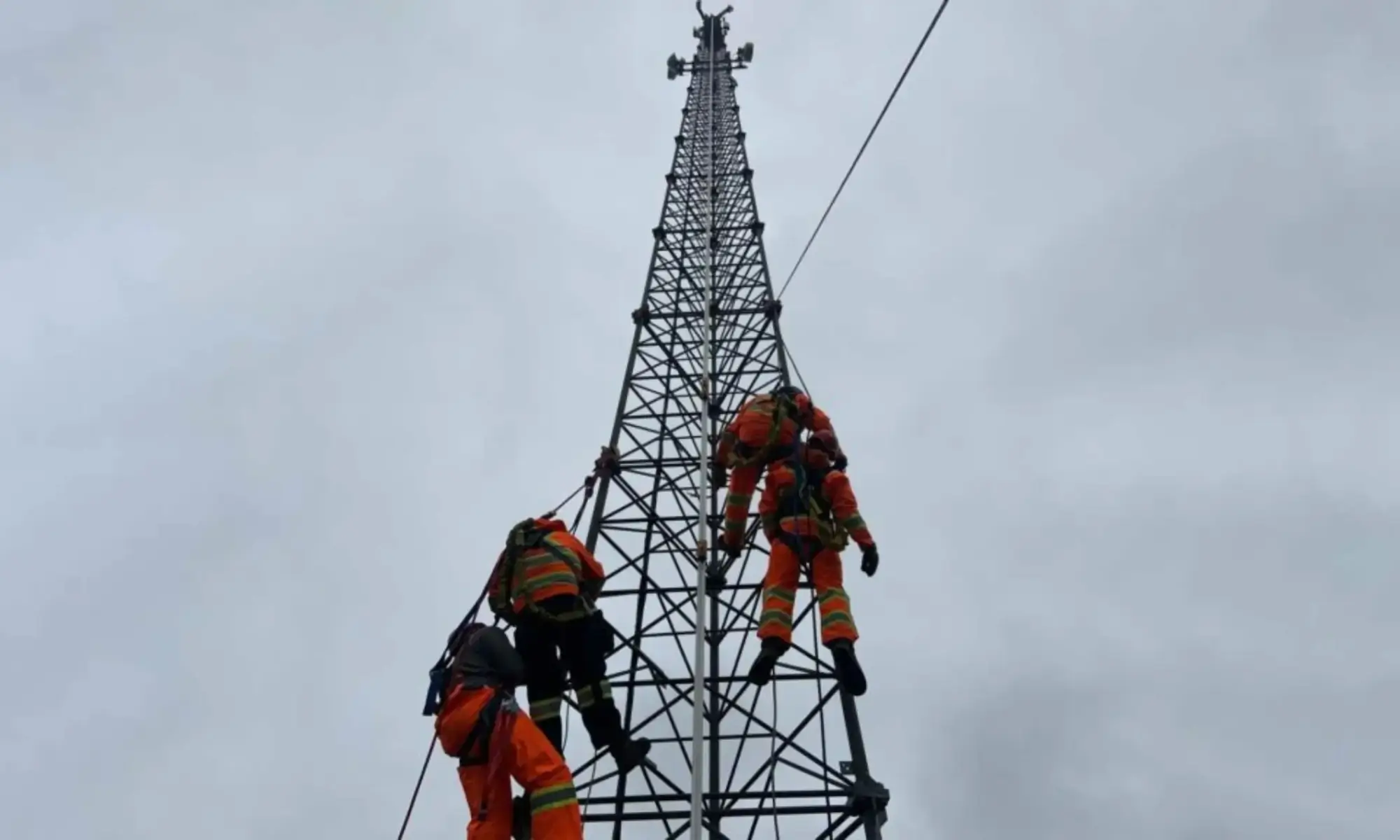
Emergency Response & Rescue Procedures
When a worker falls and is left hanging in a harness, immediate action is crucial to prevent suspension trauma. If left suspended too long, blood circulation can be severely restricted, leading to unconsciousness, shock, organ failure, and even death. A well-prepared emergency response and rescue plan can mean the difference between life and death.
1. Immediate Actions After a Fall
For the Suspended Worker (Self-Rescue if Possible)
- Move the legs frequently – This helps blood circulate and reduces pooling in the lower extremities.
- Press against a foothold or trauma relief straps – This relieves pressure from the harness and helps maintain circulation.
- Shift weight periodically – Try to alternate body position in the harness to minimize blood restriction.
- Stay calm and conscious – Panic can worsen the situation; focus on breathing steadily while awaiting rescue.
2. Rescue Team Actions
A fast rescue is critical to minimize the effects of suspension trauma. Rescue should occur within 5–15 minutes to prevent serious complications.
A. Quick Rescue Methods
- Use a ladder, aerial lift, or platform to reach the worker quickly.
- Deploy a rope rescue system such as a controlled descent or hoist to lower the worker safely.
- Use a mechanical pulley system or emergency retrieval device to raise or lower the worker.
- Ensure rescuers are properly trained and follow a pre-established emergency rescue plan.
B. If Immediate Rescue is Delayed
- Communicate with the worker and encourage leg movement to delay blood pooling.
- If possible, direct the worker to use suspension trauma relief straps or create a foothold.
- Monitor for signs of unconsciousness, difficulty breathing, or severe distress.
3. Post-Rescue First Aid & Medical Response
Once the worker is safely on the ground, proper post-rescue care is crucial to avoid further medical complications.
A. Proper Positioning (Avoid Reflow Syndrome)
⚠ DO NOT lay the worker flat immediately!
- Place them in a semi-reclined “W” position (sitting with knees bent).
- This prevents a sudden rush of pooled blood back to the heart, which could cause shock or cardiac arrest.
- Keep the worker warm and conscious while awaiting medical assistance.
B. Monitor Vital Signs
- Check for breathing and pulse. If unresponsive, begin CPR immediately.
- Look for signs of shock (pale skin, sweating, confusion).
- Assess injuries—fall-related trauma may require additional medical intervention.
C. Seek Immediate Medical Attention
Even if the worker appears unharmed, suspension trauma can have delayed effects. The following conditions require urgent medical evaluation:
- Low blood pressure and dizziness.
- Respiratory distress or irregular heartbeat.
- Kidney failure (caused by prolonged oxygen deprivation).
- Internal injuries from the fall impact.
4. Long-Term Prevention and Preparedness
A. Train Workers for Rescue & Emergency Response
- Conduct regular drills on fall rescues and first aid for suspension trauma.
- Educate workers on self-rescue techniques and proper harness usage.
- Ensure everyone knows who to contact in case of a fall emergency.
B. Equip Worksites with Rescue Tools
- Have aerial lifts, ladders, or pulley systems available to facilitate fast rescues.
- Use harnesses with trauma relief straps to give suspended workers a foothold.
- Ensure all workers carry emergency communication devices in high-risk areas.
Key Takeaways
- Fast rescue (within 5-15 minutes) is essential to prevent life-threatening effects.
- Encourage leg movement while suspended to slow the progression of suspension trauma.
- DO NOT lay the worker flat after rescue—use the semi-reclined W-position.
- Always seek medical evaluation, even if the worker seems fine after the rescue.
- Rescue teams must be trained and equipped for quick, safe recovery operations.
By having a well-prepared emergency response plan, workers and employers can effectively manage suspension trauma incidents and prevent fatalities in high-risk work environments.
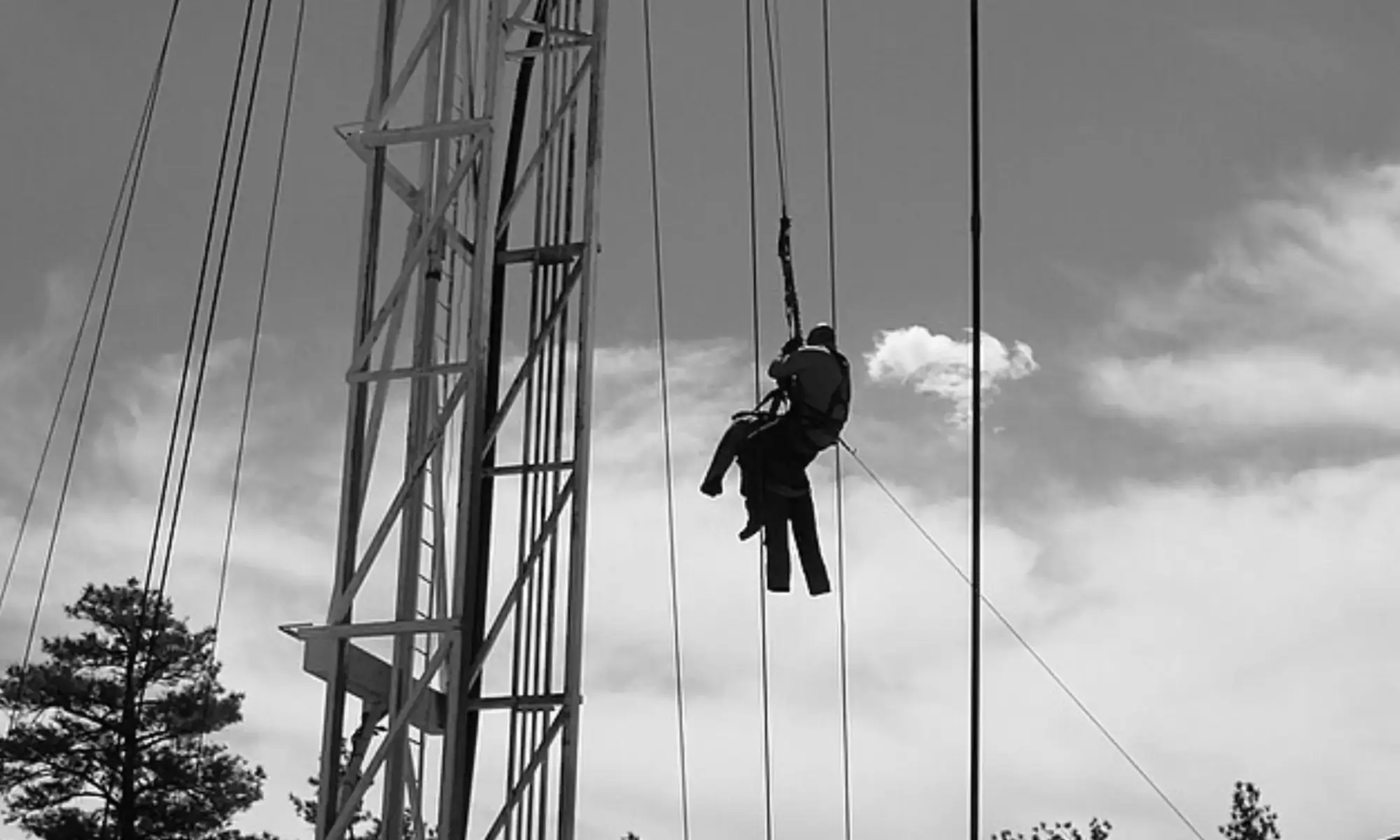
Common Myths About Suspension Trauma
Several misconceptions about suspension trauma can lead to delayed or improper responses in an emergency. Below, we debunk some of the most common myths and clarify the facts to ensure better understanding and safety for at-risk workers.
Myth 1: “If the harness saved them from falling, they are safe.”
✅ Fact: Being caught by the harness does not mean the worker is out of danger. Suspension trauma can occur within 10 to 30 minutes, leading to unconsciousness, organ failure, or death if the worker is not rescued promptly.
- Why this is dangerous: A hanging worker experiences restricted blood flow, which can cause fainting and oxygen deprivation in the brain.
- The correct approach: Even if a worker appears uninjured, they must be rescued quickly to prevent serious complications.
Myth 2: “Workers can just hang there until help arrives.”
✅ Fact: Hanging motionless in a harness can be deadly within minutes.
- Why this is dangerous: Venous pooling (blood collecting in the lower limbs) reduces circulation to the brain and heart, potentially leading to cardiac arrest.
- The correct approach: Rescue should occur within 5-15 minutes to prevent fatal consequences.
Myth 3: “All harnesses protect against suspension trauma.”
✅ Fact: Standard harnesses do not prevent suspension trauma.
- Why this is dangerous: A poorly fitted or non-ergonomic harness can increase pressure on arteries and veins, worsening circulation issues.
- The correct approach: Use harnesses with trauma relief straps that allow the worker to push against them and maintain blood flow.
Myth 4: “Moving too much while suspended makes things worse.”
✅ Fact: Encouraging movement while suspended helps prevent blood pooling.
- Why this is dangerous: Remaining still accelerates circulatory failure, making loss of consciousness more likely.
- The correct approach: The worker should pump their legs, shift weight, or use footholds to maintain circulation while awaiting rescue.
Myth 5: “Once rescued, the worker should be laid flat.”
✅ Fact: Laying a suspended worker flat immediately can cause reflow syndrome.
- Why this is dangerous: A sudden rush of pooled blood back to the heart and brain can cause cardiac arrest or kidney failure.
- The correct approach: Use the “W-position” (sitting with knees bent) to allow gradual blood redistribution and prevent shock.
Myth 6: “If the worker is conscious, there’s no need for medical attention.”
✅ Fact: Suspension trauma can have delayed effects, even after rescue.
- Why this is dangerous: Kidney failure, heart complications, and blood pressure issues may not be immediately visible but can develop hours later.
- The correct approach: Medical professionals should evaluate Every rescued worker, even if they seem fine.
Myth 7: “A fall protection system eliminates all risks.”
✅ Fact: Fall arrest systems prevent impact injuries but introduce new risks, including suspension trauma.
- Why this is dangerous: Fall protection systems reduce the severity of falls but do not address the dangers of prolonged suspension.
- The correct approach: Employers must implement rescue plans, train workers, and use trauma-relief systems to prevent suspension trauma.
Myth 8: “Suspension trauma is rare, so it’s not a priority.”
✅ Fact: Suspension trauma is a well-documented hazard that has resulted in workplace fatalities.
- Why this is dangerous: The misconception that “it won’t happen” can lead to a lack of preparedness, improper training, and fatal delays in rescue.
- The correct approach: Workplaces must prioritize training, use proper safety equipment, and implement emergency response plans to ensure worker safety.
🔍 Key Takeaways
✔ Suspension trauma can be fatal within 30 minutes—quick rescue is critical.
✔ Proper harness selection and trauma relief straps can reduce risks.
✔ Encouraging movement while suspended can delay symptoms.
✔ Rescued workers should not be laid flat—use the W-position instead.
✔ Medical evaluation is necessary after every suspension incident.
By debunking these myths and implementing effective safety measures, workplaces can better protect workers from the hidden dangers of suspension trauma. 🚧
Conclusion
Suspension trauma is a serious but preventable hazard associated with fall protection systems. Understanding the risks, symptoms, and emergency procedures is critical for workplace safety.
Key Takeaways:
- Suspension trauma occurs when a worker is left hanging motionless in a harness after a fall.
- It can cause fainting, shock, or death within 30 minutes.
- Prompt rescue is essential to prevent serious injury or fatality.
- Workers should be trained in self-rescue techniques, and emergency response plans should be put in place.
- Proper harness fit, trauma relief straps, and workplace safety planning can significantly reduce risks.
By proactively preventing falls, ensuring quick rescue response, and using proper post-rescue care, workers can stay safe and avoid the hidden dangers of suspension trauma.

